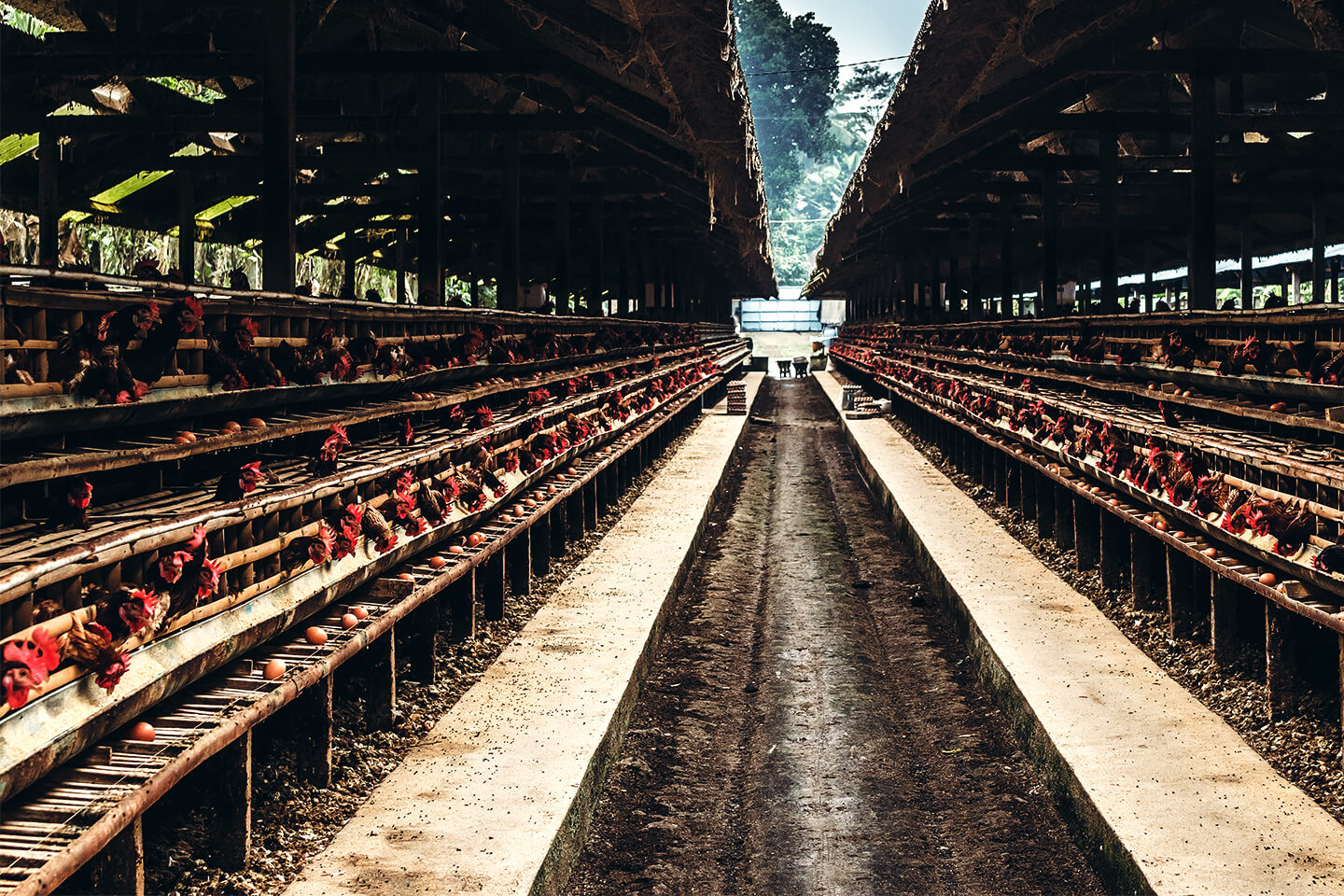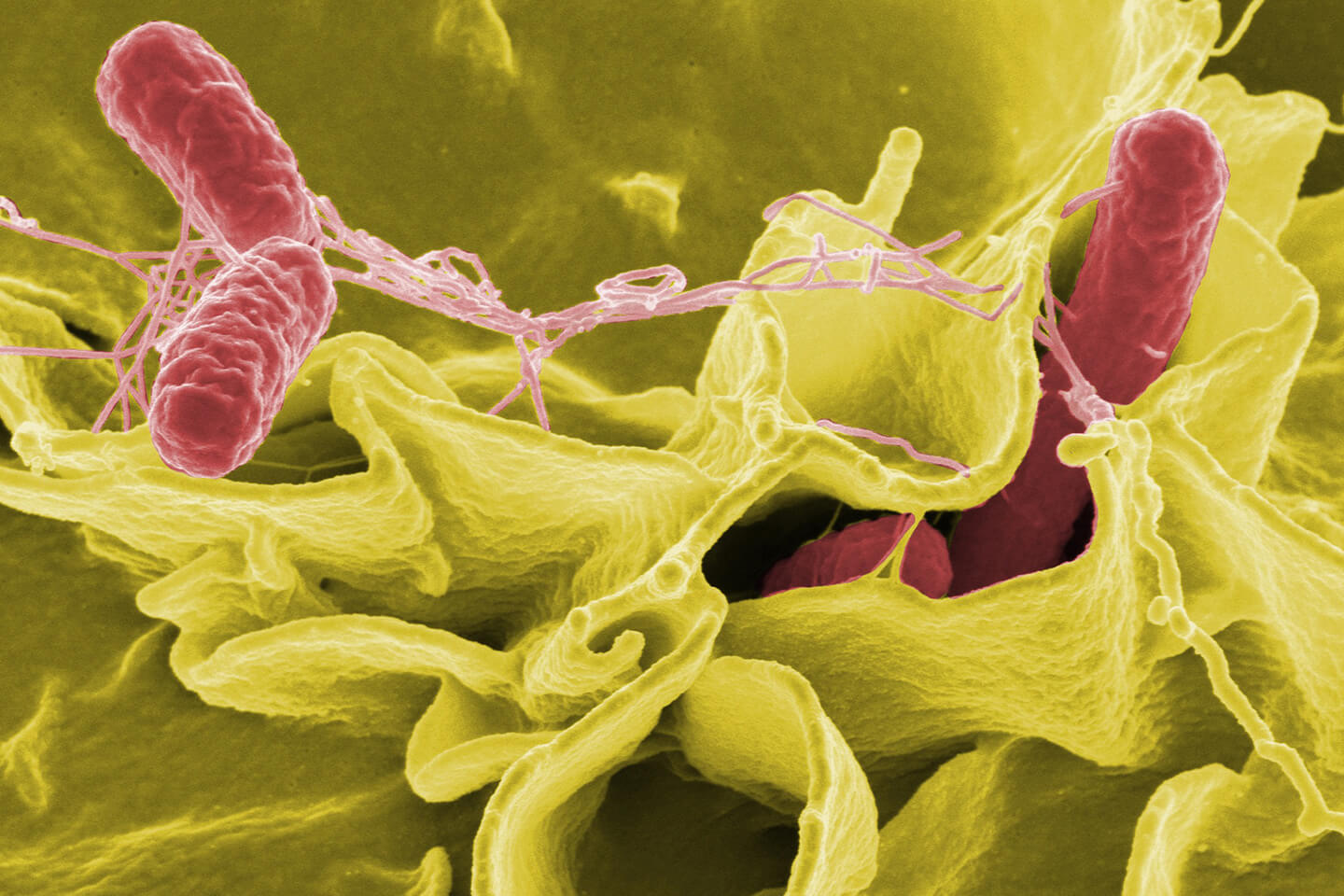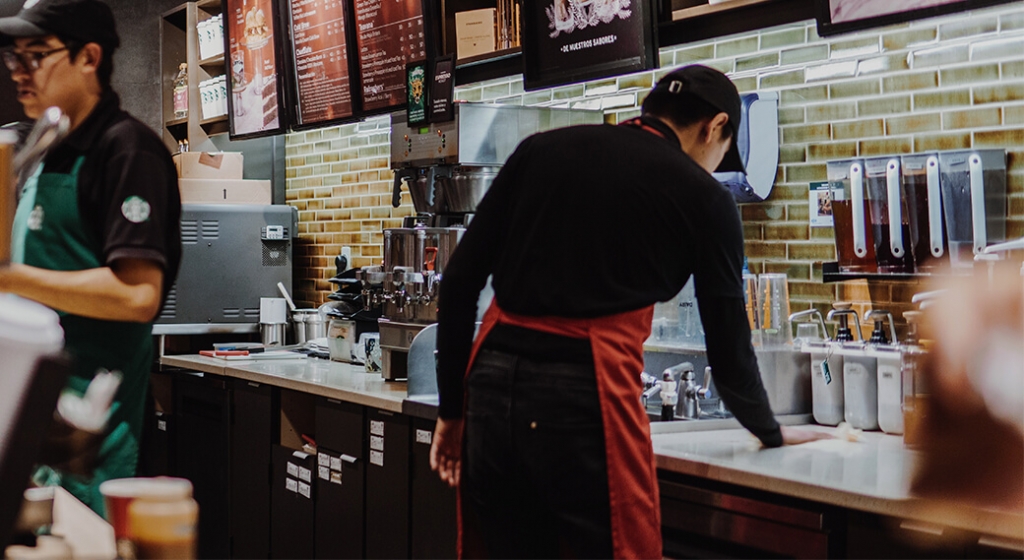Even the strongest foodservice brand can get tarnished if patrons contract a foodborne illness in their venue.
The most common form of food poisoning is Salmonella and E. coli. And these two bacteria are the most common causes of what’s traditionally known as food poisoning.
Often you hear more about E. coli when it comes to wide-spread restaurant contamination. However, Salmonella is the leading and most common cause for foodborne illnesses in the United States.
Where does Salmonella and E. coli come from?
The Salmonella and E. Coli responsible for food poisoning have a dirty secret that connects them. They both come from animal poop.
To be more accurate, they originate from the intestines of animals and humans. And these bacteria are everywhere. If you purchase your animal product from suppliers that hold their animals in poor conditions, it can increase the chances of exposure to bacteria such as Salmonella and E. coli. Not to mention it can often be synonymous with inhumane conditions.

Salmonella is found in a wide variety of ingredients including chicken, beef, vegetables, eggs, port, nuts and more.
Some ingredients such as chicken, pork and vegetables come in contact with the bacteria directly. Other ingredients are cross-contaminated when you prepare clean ingredients on the same prep table as contaminated ingredients such as raw chicken or pork.
In addition, Salmonella and E. coli spread by prep cooks not washing their hands between handling the various ingredients.
How dangerous are Salmonella and E. coli?
In a word, “very.”
Both E. coli and Salmonella are bacteria and are responsible for a wide range of sickness outbreaks, including Typhoid fever (Salmonella typhi).
In fact, Mary Mallon is nicknamed “Typhoid Mary” because she was infected with a severe form of Salmonella. However, she displayed no symptoms. Because of this, she spread Salmonella to over 50 people while working in the foodservice industry as a cook. Several of those she inadvertently infected died from Salmonella typhi.

Most people don’t realize how widespread food poisoning is. Foodborne illness affects 1 in 6 people a year in the United States alone.
Out of 48 million people that get some form of food poisoning, the CDC reports that 128,000 are sent to the hospital and 3,000 cases are lethal. Symptoms of Salmonella normally pass in about a week.
Each year, hundreds of millions of dollars are spent in medical costs treating people who have contracted a form of food poisoning.
What are the most common symptoms of food poisoning?
Salmonella and E. coli come with an array of uncomfortable symptoms such as:
- Fever
- Stomach pain including cramping
- Vomiting
- Diarrhea
- Dark urine

These symptoms occur when one of the dangerous strands of bacteria find its way into the food chain.
Although Salmonella is the most common foodborne illness to infect people, it’s companion E. coli has a couple very dangerous strains as well. This includes the variation of E. coli responsible for bacterial meningitis (Escherichia coli K1).
What can I do to prevent Salmonella in my restaurant?
It’s worth pointing out that E. coli is everywhere. You likely have E. coli right now. As stated by the Centers for Disease Control and Prevention,
“Escherichia coli (E. coli) bacteria normally live in the intestines of people and animals. Most E. coli are harmless and actually are an important part of a healthy human intestinal tract.”
It’s valuable for anyone in foodservice to have a healthy fear and respect for these facts. However, it’s just as important for restaurant owners to know there are proven prevention measures to take.
To start, keep your supply chain clean. When at the restaurant, keep your Food Prep area clean. And be sure to follow a few basic rules of thumb set out by the Center for Disease Control and Prevention.
Here are some things that are critical to maintaining a clean, safe foodservice venue:
Prevention In The Supply Chain
- Purchase meat, eggs and other products from suppliers that have Salmonella control programs in place.
- Disinfect transport trucks in between loads.
- Keep cold shipments at correct temperatures.
Prevention In The Kitchen
- Keep raw and cooked food products separated at all times.
- Keep raw chicken and meat separate from other types of raw ingredients (such as vegetables).
- Sanitize and clean food prep areas as often as possible.
- Always use a food thermometer.
- Train and certify all foodservice managers and supervisors in food safety.
Clean. Separate. Cook. Chill.
Capt. Christopher Braden summarized best practices on Foodsafety.gov by saying, “Clean, Separate, Cook, Chill.”
Order product from suppliers that keep their animal’s living areas clean. When working with ingredients, keep raw meats and vegetables separate. And always cook food to the temperatures proven to kill bacteria by the Department of Health & Human Services. And finally, chill your product – both while in transit to your restaurant as well as before it goes into prep.
Following these four rules can go a long way in keeping Salmonella and E. coli under control and off your menu.



